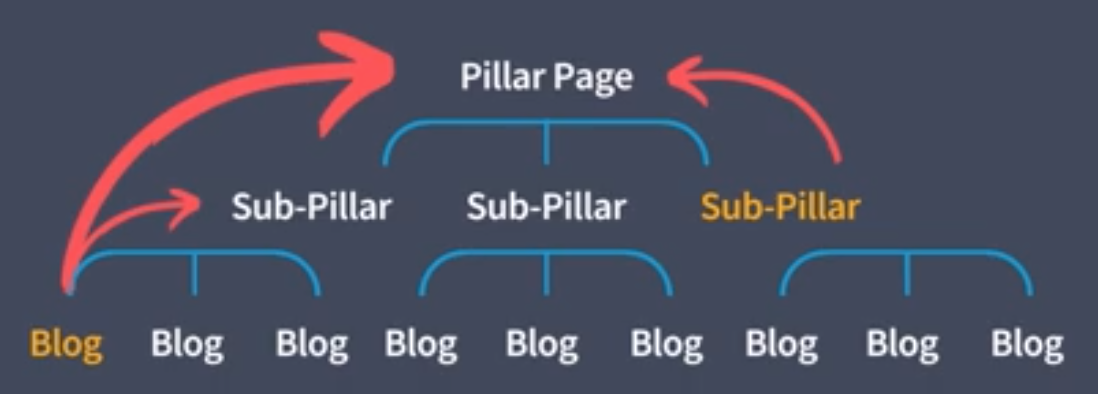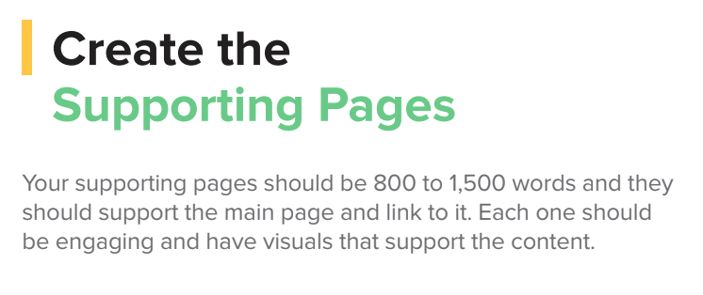What Are the Types of PBM?
July 8, 2022 •Andrew Gold

Pillar-Based Marketing, PBM for short, is taking the marketing world by storm, and for good reason. What if we told you that over 90% of all marketing content was never seen by the general public, let alone a prospective customer? Beyond that, what if a lot of the 10% that is seen doesn’t actually give readers the information they are looking for? You might not believe us. Well, buckle up, because both of those statistics are true. But more than that, those statistics are also the inspiration behind what we do here at DemandJump…Pillar-Based Marketing.
When it all boils down, the goals of PBM companies are really two-fold:
- To help companies create meaningful and useful content
- To get that content seen, i.e. get onto page one of Google
Along the way, if you use PBM effectively you will likely also achieve goals like:
- Increased overall revenue
- Lower cost per lead
- Increased ROI on marketing spend
- Increased subject matter authority
In the following blog we are going to discuss PBM strategy, its components, and different types of Pillar-Based Marketing content.

What Is a PBM Strategy in Marketing?
A PBM marketing strategy consists of generating a bunch of written content that is all related to one topic cluster or network. Topic networks are simply search engine data that indicate what people are asking and searching for around a specific subject on Google, a.k.a. keywords. Networks go one step further, though, and say, “If person A is searching for term X, they probably also search for terms Y and Z.”
All of the content you write about that cluster should include keywords. Then, it’s backlinked and published to work together in a way that increases SEO value. To really grasp PBM strategy, it’s important to understand PBM content and what goes into it. Let’s look at each next.
What Are the Components of PBM? What Are the Three Types of PBM Content?
The components of PBM include links between pieces, keywords, and calls to action, but the meat of PBM comes down to the three types of PBM content. Let’s look at each of those content types.
Pillars
Pillars are roughly 3000-word written pieces addressing the broadest perspective of the topic you want to rank for. They should include 15-20 keywords. If you are a SaaS marketing company for example, your topic might be SaaS Marketing, or Marketing in Saas. Maybe your company sells farm equipment, so your topic might be Tractors for Sale. Whatever your topic is, it should be broad enough that you can write 3000+ words about it while still addressing some of the bigger questions and talking points readers might have.

There are different types of pillars, including:
- How-to pillars that provide a step by step approach.
- What-is? pillars that answer what is… questions with in-depth information.
- Guide pillars which have a similar feel to “how-tos” except instead of detailing every step, they go through common questions and solutions to your pillar topic.
- Resource pillars which are the go-to source for any information related to your topic. Think of these like Wikipedia pages on steroids… more accurate and professional.
The goals of pillar pages are to establish authority on your subject, drive traffic, and ultimately drive outcomes like subscriptions, sales calls, or some other action. You do that by including a call to action at the end (all of your written content should have one actually) encouraging your reader to “click here” for whatever your desired outcome is.
Sub-Pillars
Sub-pillars should be around 2000 words and answer the most important and common questions around your pillar topic. For example, if you pillar topic is Personal Injury Lawyer, the next most searched terms in your content network might be:
- Personal Injury Lawyer Near Me
- What is a Personal Injury Lawyer
- How to Hire a Personal Injury Lawyer
These topics would then be your sub-pillars and would link back to your pillar to spread the SEO value. It’s important to note, at DemandJump, we recommend having at least three sub-pillars per pillar topic to really spike the SEO value your pillar receives.

The goal of sub-pillars is to continue to build authority on a topic while going into more depth and ultimately to prop up the pillar in order to drive outcomes. They should include around 15-20 keywords.
Supporting Blogs
Supporting blogs are around 750-1000 words long and answer the nuanced and narrow questions in your topic cluster. Sticking with the personal injury lawyer theme, blog topics might be:
- When is The Best Time to Hire a Personal Injury Lawyer?
- Is a Personal Injury Lawyer Worth It?
- What Makes a Personal Injury Lawyer Good?
- What is the Average Payout From a Personal Injury Settlement?
For every sub-pillar, you should also have three supporting blogs. In order to share the SEO value, the blogs need to link to both the main pillar and the sub-pillar they relate to. We also recommend having at least three blogs that just support the pillar and are not related to a sub-pillar. So, if you are keeping score at home that means for every whole pillar you need:
- 1 pillar page
- 3 sub-pillars
- 12 supporting blogs, 3 to each sub-pillar and 3 directly to the pillar
The goal of supporting blogs is to answer the straightforward questions people are Googling while also driving traffic to the pillar and driving outcomes like sales or meetings. Blogs should have around 8-10 keywords.
DemandJump…Pioneering PBM
Plain and simple, DemandJump exists to make it easy to create top tier content that ranks on page one of Google. We take the guesswork out of marketing by telling you:
- Exactly what content to write
- Exactly what your audience is searching for
- Exactly what keywords to include
- And exactly how to create a PBM plan
To learn more about PBM or DemandJump, check out our PBM marketing course DemandJump University or try it free today!
Featured Articles
Categories
- Attribution Tracking (13)
- Channel Optimization (11)
- Consumer Insights (68)
- Content Marketing (251)
- Data Science (8)
- Digital Marketing (6)
- Digital Transformation (26)
- Enterprise (10)
- Lead Generation (14)
- Market Intelligence (8)
- Marketing Analytics (39)
- Marketing Attribution (57)
- Marketing Management (153)
- Marketing Operations (86)
- Organic Search (222)
- Paid Search (52)
- Pillar-Based Marketing (63)
- Programmatic Advertising (9)
- SaaS Content (14)
- SaaS Marketing (29)
- Search Marketing (111)
- SEO Keyword Research (28)
- SEO Pillar (18)
- SEO Strategy (46)
- SMB (5)
- Website Content (12)


